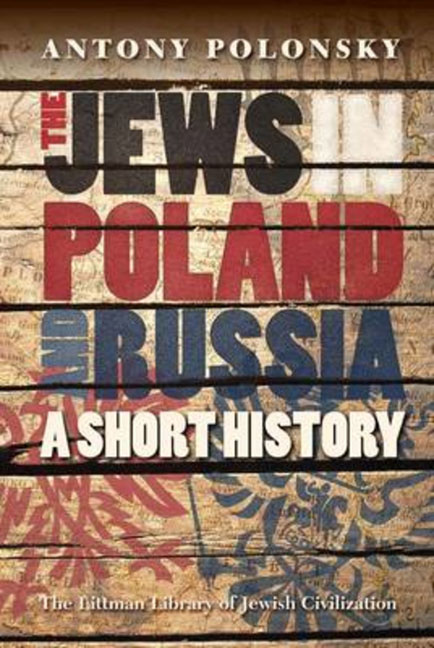Book contents
- Frontmatter
- Dedication
- Preface
- Acknowledgements
- Contents
- List of Maps
- Note on Transliteration
- Note on Place Names
- Maps
- Introduction
- 1 The Polish–Lithuanian Background
- 2 Attempts to Transform and Integrate the Jews, 1750–1881
- 3 The New Jewish Politics, 1881–1914
- 4 Social and Religious Change, 1750–1914
- 5 The First World War and its Aftermath
- 6 The Jews in Poland between the Two World Wars
- 7 Jews in Lithuania between the Two World Wars
- 8 Jews in Soviet Russia and the Soviet Union, 1921–1941
- 9 War and Genocide, 1939–1945
- 10 From the End of the Second World War to the Collapse of the Communist System
- 11 Jews in Eastern Europe and Russia since the End of Communism
- Conclusion
- Postword
- Glossary
- Notes
- Bibliography
- Index
6 - The Jews in Poland between the Two World Wars
- Frontmatter
- Dedication
- Preface
- Acknowledgements
- Contents
- List of Maps
- Note on Transliteration
- Note on Place Names
- Maps
- Introduction
- 1 The Polish–Lithuanian Background
- 2 Attempts to Transform and Integrate the Jews, 1750–1881
- 3 The New Jewish Politics, 1881–1914
- 4 Social and Religious Change, 1750–1914
- 5 The First World War and its Aftermath
- 6 The Jews in Poland between the Two World Wars
- 7 Jews in Lithuania between the Two World Wars
- 8 Jews in Soviet Russia and the Soviet Union, 1921–1941
- 9 War and Genocide, 1939–1945
- 10 From the End of the Second World War to the Collapse of the Communist System
- 11 Jews in Eastern Europe and Russia since the End of Communism
- Conclusion
- Postword
- Glossary
- Notes
- Bibliography
- Index
Summary
THE JEWISH COMMUNITY IN POLAND
The emergence of an independent Polish state brought under one government the very different Jewish communities that had evolved in the different partitions. According to the census of 1921, there were in Poland 2,845,000 people of the ‘Mosaic faith’; however, only 2,110,000 people gave their nationality as Jewish, implying that 25 per cent of Jews had stated their nationality as Polish. This could be taken as an index of the degree of acculturation, but was more likely a reflection of the desire to please the census takers and also of the situation in Galicia, where before 1914 the existence of a separate Jewish nationality had not been recognized and Jews had for the most part given their nationality as Polish. The census of 1931 gives a more reliable indication of the extent of acculturation. Of the 3,114,000 people of ‘Mosaic persuasion’, 2,488,000 (79.9 per cent) gave Yiddish as their mother tongue, 244,000 (7.8 per cent) Hebrew, and 372,000 (11.9 per cent) Polish. The Hebrew-speaking group was almost certainly composed of Zionists, who campaigned among their followers to declare Hebrew their language of daily use, and it should probably be divided between the first and third groups.
The position of the Jews differed considerably in the various partitions (see Map 15). In Prussian Poland in 1921 there were barely 30,000 Jews (less than 1 per cent of the population). Before the First World War the largely Germanized communities there had already experienced mass emigration in response to the growing conflict between the Polish majority and the Prussian government and local Germans, and to the opportunities available to them in towns like Berlin and Breslau. The setting up of an independent Polish state led the bulk of those who had remained to move to Germany. Thus, by 1931 what had once been the major Jewish community of Poznan´ consisted of fewer than 2,000 individuals.
In Galicia, whose Jewish community numbered 736,000 (just over10 per cent of the population) in 1921, the granting of equal rights under the Polish autonomous regime in the 1860s meant that Jews had enjoyed greater educational opportunities, so that the percentage of Jews in the learned professions was high. This was also the area with the largest percentage of Polish-speaking Jews.
- Type
- Chapter
- Information
- The Jews in Poland and Russia: A Short History , pp. 211 - 252Publisher: Liverpool University PressPrint publication year: 2013



